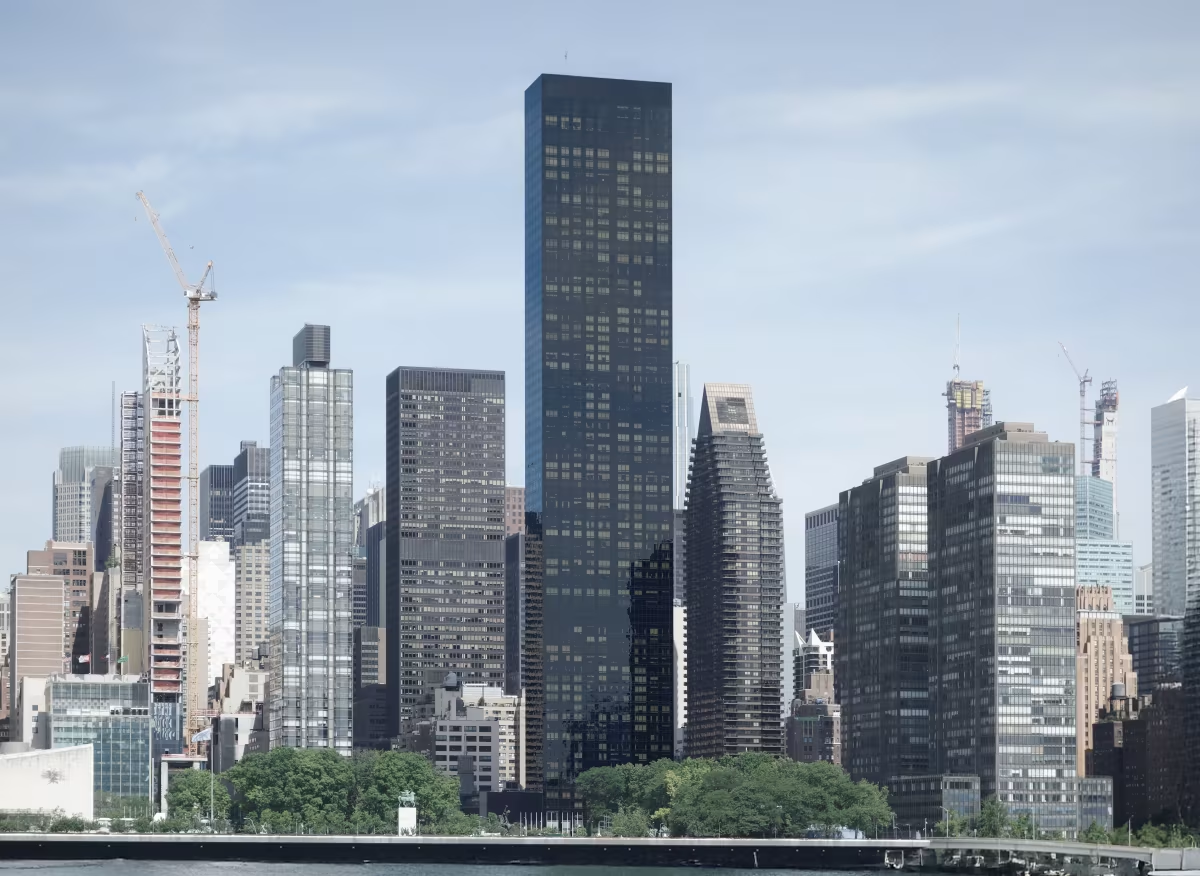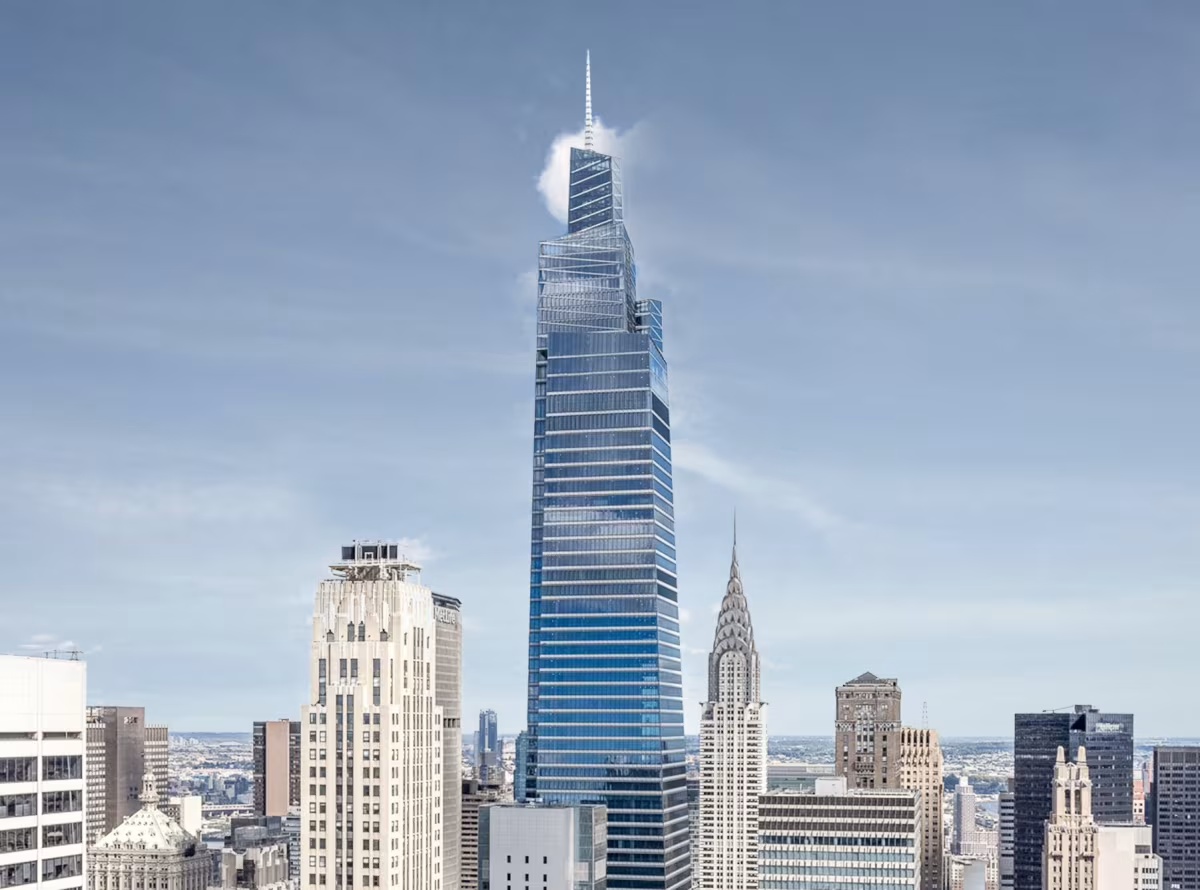Trump World Tower vs One Vanderbilt


Comparing the Trump World Tower and the One Vanderbilt is interesting because they both rise in New York, NY, yet they were conceived by two different design teams, Costas Kondylis and Kohn Pedersen Fox Associates, and were completed at different points in time. They were finished more than a decade apart.
This contrast within the same city allows us to see how different creative minds interpreted the evolving needs of New York across time.
Let's take a closer look!
Height & Size
These two towers present an interesting contrast in their proportions. The One Vanderbilt rises higher at 1401ft (427m), while the Trump World Tower reaches 860ft (262m). However, the Trump World Tower accommodates more floors with 72 levels above ground, compared to 67 floors in the One Vanderbilt.
This suggests different approaches to interior space design. The One Vanderbilt has an average floor-to-floor height of approximately 6.4m, while the Trump World Tower has more compact floors averaging around 3.6m each. The taller building's more generous floor heights might indicate grander interior spaces, higher ceilings, or different programmatic requirements.
These different proportions likely reflect the specific needs each building was designed to serve, whether driven by zoning regulations, client requirements, or the intended use of the spaces within. The contrast shows how architects can achieve different spatial experiences even when working with similar overall building scales.
Architectural Style
Both the Trump World Tower and the One Vanderbilt were designed in line with the aesthetic conventions of the Contemporary style.
At the time, this style was at the height of its popularity. So both Costas Kondylis and Kohn Pedersen Fox Associates followed what was in many ways expected of them, producing designs that fit comfortably within contemporary architectural norms, rather than breaking with convention.
Uses
The Trump World Tower is primarily residential, while the One Vanderbilt is primarily commercial.
The Trump World Tower offers 376 residential units.
Structure & Facade
The two buildings opted for different structural and facade solutions.
The Trump World Tower uses a Frame system, which relies on a regular grid of columns and beams to sustain its weight, while the One Vanderbilt uses a Trussed Frame system, that uses diagonal bracing in addition to beams and columns for stability.
And when it came to the facade, the Window Wall went with a Window Wall facade, which uses panels fitted between floor slabs, leaving slab edges visible, while the One Vanderbilt opted for a Curtain Wall facade, that uses a lightweight glass curtain wall hung from the structure.
| Trump World Tower | One Vanderbilt | |
|---|---|---|
| Costas Kondylis | Architect | Kohn Pedersen Fox Associates |
| 1999 | Construction Started | 2017 |
| 2001 | Year Completed | 2020 |
| Contemporary | Architectural Style | Contemporary |
| Residential | Current Use | Commercial |
| 72 | Floors Above Ground | 67 |
| 2 | Floors Below Ground | 4 |
| 251 | Last Floor Height | 330 |
| 262 m | Height (m) | 427 m |
| 89,800 m² | Usable Area (m²) | 162,600 m² |
| Frame | Structure Type | Trussed Frame |
| Reinforced Concrete | Vertical Structure Material | Steel |
| Concrete And Steel | Horizontal Structure Material | Poured Concrete Over Metal Decking |
| No | Facade Structural? | No |
| Aluminum, Glass | Main Facade Material | Aluminium, Glass, Terracotta |
| Bovis Lend Lease | Main Contractor | AECOM Tishman Construction |
| Otis Elevator Company | Elevator Company | Schindler |
| WSP Cantor Seinuk | Structural Engineer | Severud Associates Consulting Engineers |
| NY | State | NY |
| New York | City | New York |
| 845 United Nations Plaza | Address | 1 Vanderbilt Avenue |